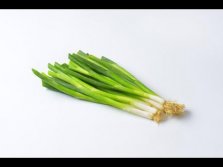
Bulbus Allii Fistulosi or Spring Onion, also known as Cong Bai in Traditional Chinese Medicine, is simply SCALLION to us here in Jamaica and is a staple seasoning in many dishes. Not often recognised for its healing properties, this herb, though relatively mild, has a number of uses outside the kitchen.
BENEFITS INCLUDE: - Relief of cold and flu symptoms
- Clearing nasal congestion
- Disperse skin sores and abscesses
COMMON COLD Perhaps no big surprise, scallion may be added to soups or taken as a tea as a remedy for the common cold or flu in the very early stages. It may also be combined with garlic and cayenne in a broth and taken at the onset of cold or flu symptoms.
NASAL CONGESTION Scallion can be used for the relief of nasal congestion, whether due to the common cold or for chronic rhinitis sufferers. It is a warming herb, so it is best used in cases where the mucus/phlegm is clear or white.
ABSCESSES Scallion is also used to relieve toxicity presenting as sores and abscesses on the skin. In these cases, the herb may be made into a poultice and applied externally.
PREPARATION AND DOSAGE Two to five scallion stalks, along with the whites can be taken over the course of one day. Be sure to select the freshest and most aromatic scallions. It may be used raw, as a tea or as a poultice. To eliminate a strong odour on the breath, chew a few sprigs of parsley.
TEA PREPARATION When taken as a tea, little brewing is necessary. Simply add hot water to the chopped herbs, cover and steep for a few minutes before drinking. When adding to soups, add near the end.
POULTICE PREPARATION Cut up a handful of scallion in a bowl. Pour enough boiling water in the bowl to just cover the herb. Mash the scallion and water into a pulp, using a spoon or a pestle and mortar if you have one. Allow to cool then spread the pulp on the affected area. Cover with a piece of gauze and bandage to hold the poultice in place. If the area is small enough, a Band-Aid may be used. Leave on for several hours.
CAUTION - The tea is not indicated for persons experiencing profuse sweating.
- Do not add honey when taking orally.
- Application on the skin may in rare cases cause redness if used excessively and should not be applied to the skin long-term.
